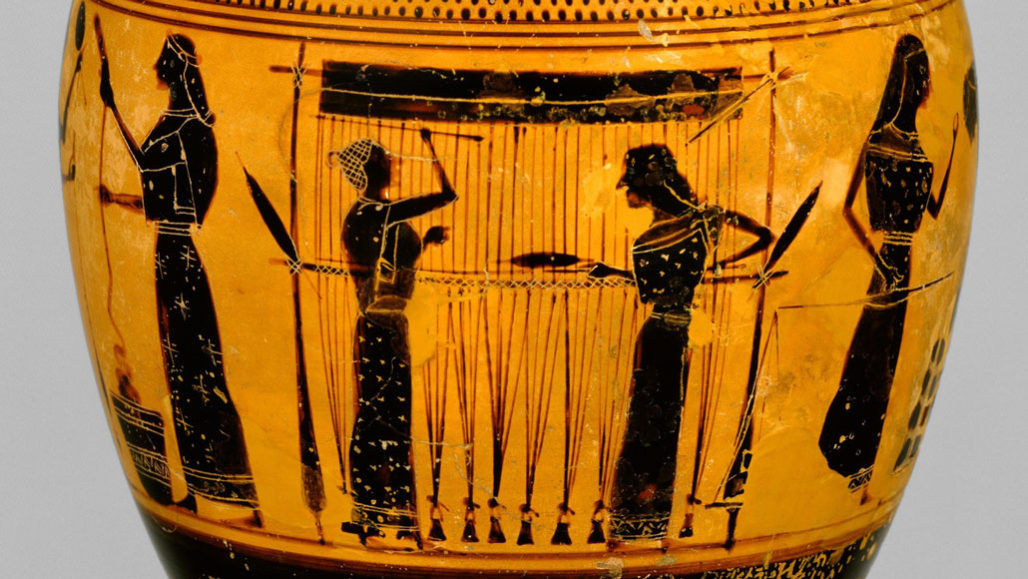Walk: Presidio and Hood
Distance: 5 miles
 |
| Greek oil flask from about 550 B.C. supports the idea that spinning and weaving were primarily women’s work*. |
Silly Ciwt is still trying to get some grip on the history of textiles.
Of all the art histories fabric (clothing, design, manufacture) is the least accessible, largely because of supply and fragility. Much is known about ceramics because it is endurable (although usually not in its original, unbroken form). Even ancient wood objects, while rare, have surprising longevity with one existing Spanish tool fragment assigned by scholars to a range of 55,000 - 13,000 BC..
But not so fabric. What little ancient material has been found is in tatters and very fragile, needing to be stored in conditions that give scholars very limited access. And those fabrics give no indication of their original shape and color, ownership (priviliged or lower class), relative quality at the time it was used or worn, manufacture. There is a fine linen shirt preserved in the tomb of Tutankhamum and now at the V and A Museum that dates from around 1360, but such a survival is extremely rare.
Much of the early history of fabric is told by art such as the Pompeiian wall paintings which show actual contemporary fashion as well as how fabrics were used as wall, floor and table coverings. Every great once in a while early textiles have left impressions on corroded metal or clay. And there are a variety of ancient economic accountings of fabric holdings or trade. Historians (including scientists) grope their way along. Imagine trying to reconstruct the civilization from this 3,000 year old fragment thought to be the first instance of chemical dying in history: 
Basically textile history is essentially obscure until the 1550's. By then more people were econically able to consume, there was (slightly) more leisure, more colonies, more trade routes and mediums of exchange, more artists, more consumers, more more mercantile organizations, more inventions. Paintings were in demand and through them historians can get an actual look how life was being lived, dressed and furnished.
 |
| Jean Francois de Troy, A Reading from Moliere, 1728 |
When demand for fabric really caught on and the economies of countries (such as wool in England), towns and cities were nearly solely based on it, some events read like thrillers. Weavers were lured to ambitious areas, some actually kidnapped; citizens were forbidden - often on penalty of death -to wear clothing of fabrics manufactured outside their realm. Merchants from foreign countries were watched like spies, apprehended and jailed if they traded in forbidden fabrics or disallowed quantities. Inventions were kept under lock and key.
From the 1550's it was on to the Industrial Revolution (1780-1880) and into the modern era culminating for now with the invention of elastic, wrinkle resistant synthetics and rumors of 'smart fabrics' which will do things like light up, change colors, harness heat and sound. All in all, fabric has come a long way, but, really, the four original all-natural fabrics - linen, cotton, wool, silk - whatever their obscure histories will likely prove impossible to improve on.
* And economically exceedingly important.
No comments:
Post a Comment